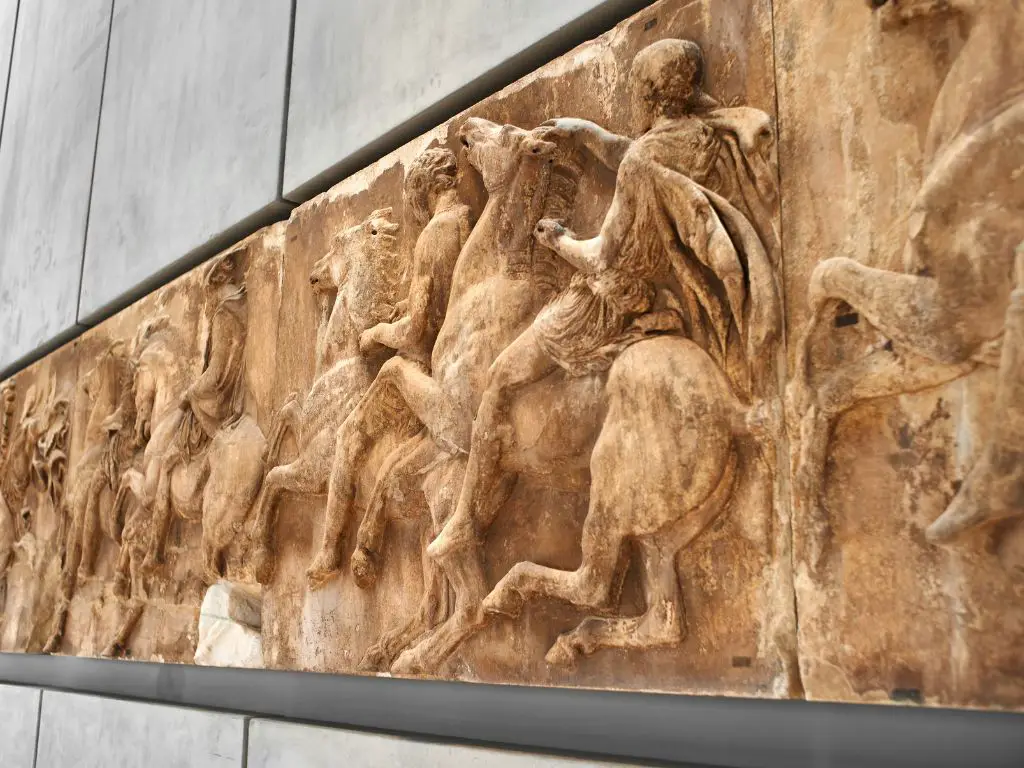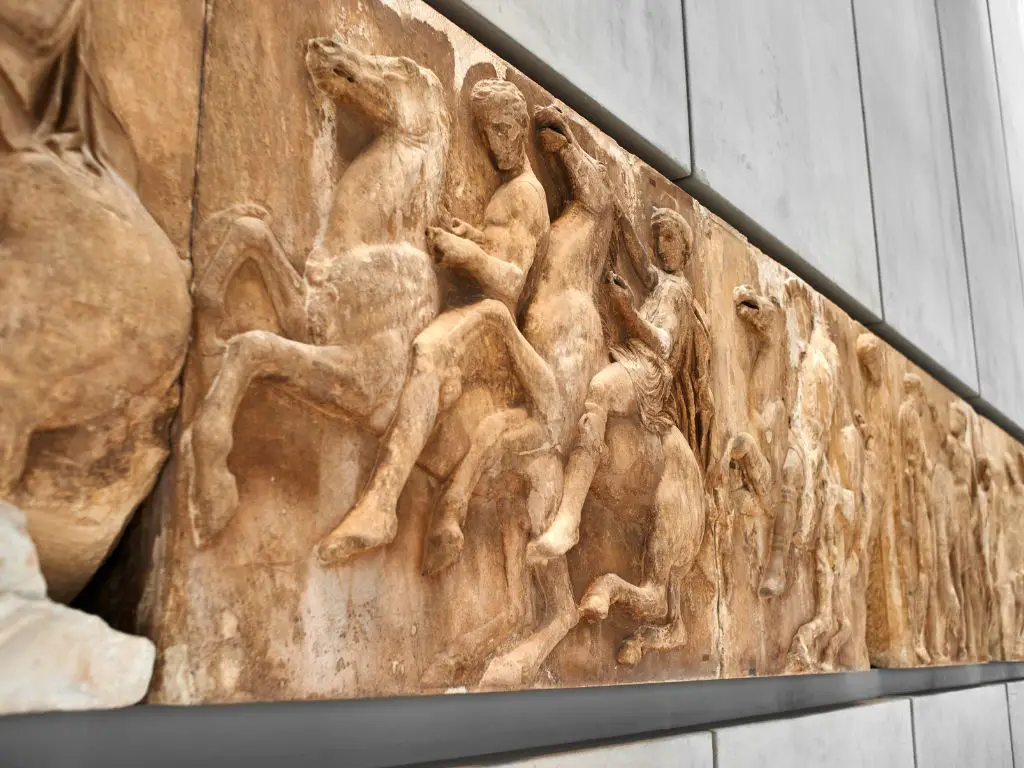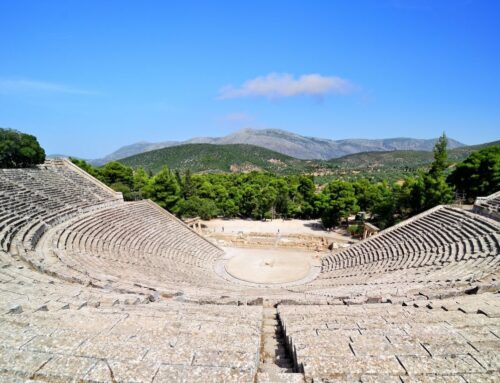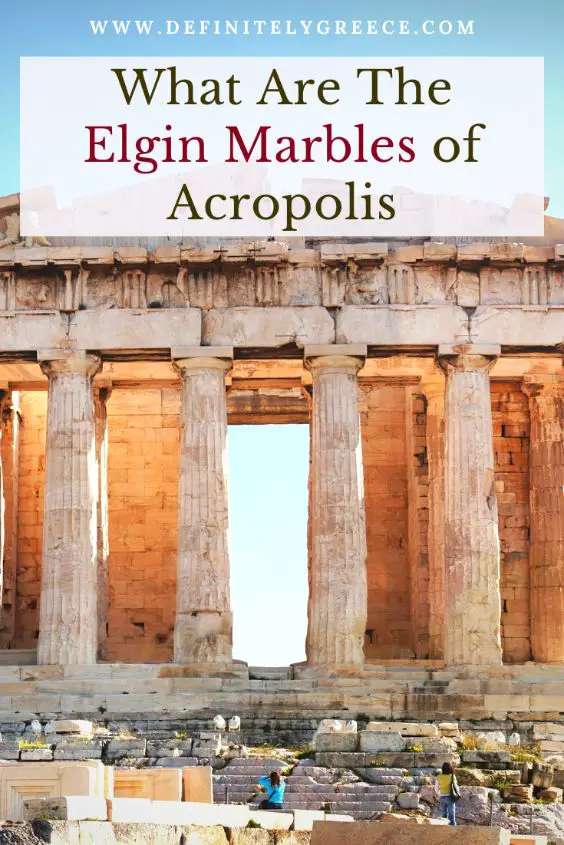What Are The Elgin Marbles And Why Are They So Famous
What Are The Elgin Marbles And Why Are They So Famous

☞ Table of Contents:
If you are spending some time in Athens there is no shortage of things to do, and it is almost guaranteed that you will be exploring the 7 hills of Athens and climbing the slopes of the Acropolis. This, as you will know, is not complete without a trip to the Acropolis museum. As you walk around this museum in Athens it is like taking a step back in time. The third floors careful reconstruction of the remaining parts of the Parthenon is an incredible insight into the past.
However, there is something odd that might catch your eye. While many parts of the temples frieze and pediment are battered and worn, as you would expect of two thousand year old pentallic marble, there are an equal number of parts that are made of crisp white plaster.
These are not lost as you might first assume, but actually still exist today! They lie thousands of miles away in the British Museum. This heartbreaking separation of the pieces of Athens defining jewel has been the subject of contentious debate for over 200 years. So, what are the Elgin marbles and why are they so famous?
☞ Related: 2 Days In Athens – The Way A Local Would Do It
A Quick History Of The Acropolis
The Acropolis, built in 432 BC is an iconic feature of Athens. Here you can see the Parthenon, which is the temple dedicated to the Greek goddess Athena, goddess of wisdom and warfare and the reason the capital got its name. The Acropolis attracts thousands of visitors a year and while it is an incredible experience, it is not the only reason you should visit the city. There are so many ancient sites worth visiting within walking distance, including the Ancient Agora!
After its construction, the Acropolis stood proud for over two thousand years, that is until 1687. Greece was under Ottoman rule from the middle of the 15th until the 19th century and in this time the Parthenon was converted into a mosque, and also used to store gun powder. In 1687 during the Morean war it was hit with mortar shell by the Venetians and blown up! This beautiful temple became a fraction of its former glory and lay in ruins.
If you are still wondering ‘what are the Elgin marbles’, that comes next!


What Are The ‘Elgin Marbles’
To answer the question ‘what are the Elgin marbles’ you must first learn who Lord Elgin was. As the Parthenon lay in ruins, Greece remained under Ottoman rule. It would not be until the beginning of the 19th century that the fate of its precious marble remains would be sealed.
Lord Elgin (Thomas Bruce) was the seventh Earl of Elgin and became the British ambassador to the Ottoman sultan in 1799. Not long after he sailed to Greece he requested a firman that gave him the rights to take away the marbles, although the ambiguous language in this document in now debated.
Originally, he had them in his home but when he ran into financial strife he sold them to the British crown. The term Elgin marbles refers to the collection of marbles that Lord Elgin took from the Acropolis in 1801, that are now housed in the British Museum in London.
The collection includes about half of all the marbles that remained of the Parthenon, including just under half of the frieze and much of its pediment. Elgin also took a caryatid from the Erechtheion and parts of the frieze from the Temple of Athena Nike.
Ongoing Controversy
Not only was Greece under Ottoman rule at the time but the legality of the firman issued to Lord Elgin remains under controversy.
The Greek government, especially in more recent times, has increasingly pushed for the return of the Parthenon marbles, but Britain has held firm. The trustees of the British museum believe ‘that the current locations of the Parthenon sculptures allows different and complementary stories to be told about the surviving sculptures, highlighting their significance for world culture and affirming the universal legacy of ancient Greece’.
While it doesn’t appear that the Parthenon marbles will be returning any time soon, this is a matter that lies at the very heart of the Greek people, and it will not be let to rest anytime soon!
☞ Related: Your Ultimate Greek Experience – Visit Athens with us!
- Now you’re no longer wondering ‘what are the Elgin marbles’, but ‘where do they really belong?’. Let us know your thoughts in the comments below!
*Disclaimer: This page includes affiliate links. If you decide to book something through one of them, I might get a little bonus, but it won't cost you anything extra.*































